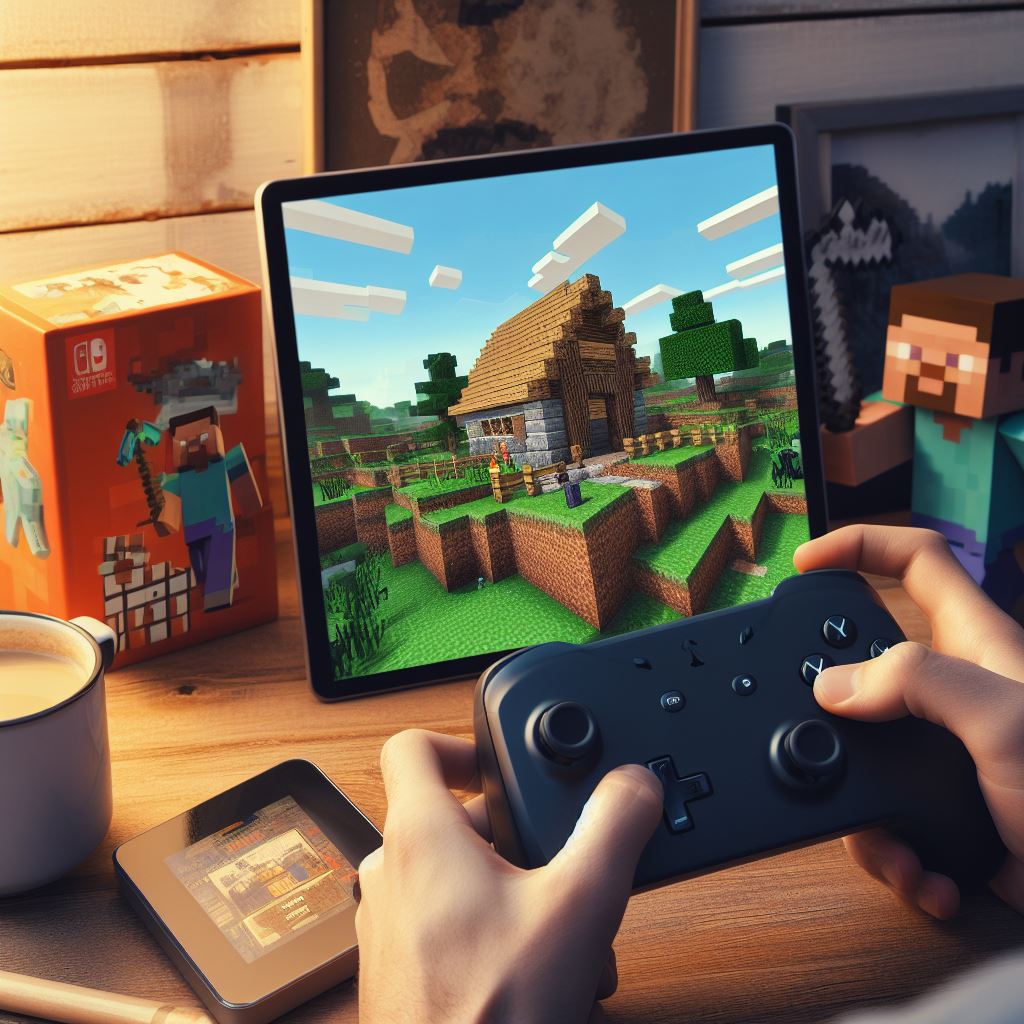Minecraft Realms provide an official, hassle-free way to create servers and play multiplayer Minecraft with friends.
Realms handle the server hosting and management for you, so you can focus on fun and collaboration without technical complexity.
For less than $10 per month, Realms give your group an always-online Minecraft world accessible from multiple devices. Everything is handled through Mojang’s official Minecraft clients – no separate server software required.
This guide will cover:
- The benefits of Realms over self-hosted servers
- Step-by-step instructions for creating your Realm
- Inviting friends and setting permissions
- Managing your subscription and payment
- Key limitations to note
- Realm mini-games and mod customization
- Keeping your Realm secure
- Transitioning from a Realm to your own server
With Realms, even players with no server experience can quickly spin up a Minecraft multiplayer world. You get automatic backups, easy inviting, and cross-play between mobile, console, and desktop clients.
While less configurable than DIY servers, Realms offer a far simpler way to play Minecraft with friends.
Read on to learn how Realms can take your multiplayer experience to the next level.
Benefits of Realms

Compared to running your own Minecraft server, Realms offer quite a few advantages:
Automatic hosting
Mojang hosts the Realm on their servers, so you don’t have to manage hosting yourself. Servers are online 24/7 with automatic restarts and updates.
Easy setup
Through the Minecraft client, creating a Realm takes just minutes. No need to port forward, install Java, or configure server software.
Managed backups
Realms perform timed backups you can restore anytime something goes wrong. No manual work creating backups required.
Mobile, console, and PC access
Players on mobile, Windows 10, console editions, and Java desktop can all join your Realm for true cross-platform multiplayer.
Simplified inviting
You can easily invite your Minecraft friends to your Realm from within the game client. No whitelist editing required.
In-game management
Manage your Realm settings like permissions, backups, and minigames from within your Minecraft client without a separate control panel.
Multi-world support
Realms enable creating multiple custom multiplayer worlds within your Realm. You’re not limited to just one main shared world.
Free trial
New Realms come with a free 30 day trial period, letting you test out the features before paying.
Reasonable pricing
Subscriptions start at just $7.99 per month for up to 10 simultaneous players. Compared to hosted servers, Realms present a cost-effective option.
Of course, the trade-off for this simplicity and ease of use is reduced customizability versus self-managed Minecraft servers. Still, for small groups of friends who value convenience over configuration, Minecraft Realms tick all the right boxes.
Creating Your Realm

Follow these steps to easily create your own Realm in Minecraft:
1. Obtain a Realms subscription
You can subscribe to Realms from within your Minecraft Bedrock or Java Edition client. Click “Play” on the main menu then “Create New” under Realms Plus to begin a monthly subscription.
2. Activate your free trial
New Realms subscribers get 30 days free to try it out. Be sure to enable the free trial so you aren’t immediately charged when creating your Realm.
3. Choose a Realm name
Pick a unique name for your Realm. This will be displayed to players when they browse for Realms. Names must be 3-16 characters and can’t contain special symbols.
4. Select a world type
Choose between normal, mini games, and imported worlds. Normal creates a standard Minecraft survival world. Mini games offer preconfigured experiences like drag racing and parkour. Imported lets you upload an existing world file.
5. Configure world settings
For normal worlds, you can toggle PvP, invite links, backups, and coordinates. Set the difficulty from peaceful to hard. Mini games have preconfigured settings.
6. Set user permissions
As the owner, you can choose player roles like member, visitor, or operator for different permission levels. Members can build, visitors just explore. Ops get special powers.
7. Invite friends
From the Realms members tab, you can invite other Minecraft users by name. They’ll receive a notification to join your Realm.
8. Copy the Realm code
You can share a unique join code to allow access without invites. But beware, this code allows anyone to join if they have it.
Once created, your Realm will be online and accessible from your Minecraft client’s Realms tab. Congratulations, your private Minecraft world is ready for multiplayer fun!
Managing Your Realm

As the Realm owner, you have control over certain management tasks:
Pausing your Realm
In the settings, you can pause your Realm temporarily to stop access and billing. World data remains intact while paused. Just reactivate when ready.
Downloading your world
Download copies of your Realm’s world data locally to your device. You can then upload this world file elsewhere.
Resetting world
Delete all world data and start fresh with a brand new seed and terrain. Backup first if you want to preserve your world in its previous state.
Adjusting permissions
Change member, visitor, and operator permissions from the members tab. For example, revoke building rights for visitors.
Adding mini-games
Expand your Realm with pre-made mini-game worlds supporting up to 8 players. Options include dragon escape, speed builders, and gravity runner parks.
Restoring backups
Browse available backups from the history tab. Restore an older version if something goes wrong in your world.
Downloading player data
From the members tab, you can download inventories, ender chest contents, and positions for each member. Helpful if they lose items.
Adding addons
Realms support both behavior packs that alter mob AI and resource packs to change textures and sounds. Upload these in the settings.
Switching to a larger plan
If your needs outgrow the 10 player limit, you can upgrade to a monthly plan allowing up to 20, 30 or even 50 simultaneous players.
Moderating chat
Minecraft Realms come with basic chat moderation tools to block unwanted words phrases. Set rules in the settings area.
Be sure to regularly check in on your Realm to perform management tasks, tweak settings, and keep things running smoothly for your community.
Minecraft Realms Limitations to Note

While Realms offer an easy introduction to Minecraft multiplayer, there are some limitations to be aware of:
Lack of mod support
Unlike many self-hosted servers, Minecraft Realms currently do not support installing mods or custom plugins beyond basic addons.
Maximum player limits
The number of slots ranges from just 10 players on the cheapest plan up to 50 players on the most expensive at $14/month. Large communities will outgrow Realm caps.
Less control over configuration
Compared to managing your own server, Realms offer far fewer settings to tweak performance, backups, permissions, etc. Management happens through Mojang’s interface.
No switching server software
You’re limited to Mojang’s default Realms server software. No option to use Paper, Fabric, or mods like Bukkit for better performance.
No permanent worlds
Realms are not meant for indefinite survival worlds. Mojang may reset or delete them after periods of inactivity. You cannot export the full world files.
No rollbacks or restoring builds
Unlike DIY servers with logging plugins, you cannot rollback griefer damage or restore demolished builds in Realms.
Gameplay limits
Mojang imposes limits on Realm gameplay, like restricting certain redstone contraptions, mob farms, and minigames to maintain performance.
No access to console or files
As a Realm owner, you don’t get root access to console, logs, or the server file system. You must manage through Mojang’s tools.
Mojang controls updates and changes
Since Mojang hosts the Realm, they handle when updates roll out. You cannot delay updates that might break mods or rollback changes you dislike.
Overall, Realms trade control and customization for simplicity. For small groups playing mostly vanilla survival Minecraft, the limitations may not matter much. But large or heavily modded communities will likely find Realms too constraining.
Security and Grief Prevention

To keep your Realm safe from griefing and unwanted access, be sure to leverage the available security protections:
Adjust invite permissions
Set member, visitor, and operator permissions appropriately. Don’t grant operator status lightly, as it gives destructive powers.
Disable open invites
Require manual invites only. Don’t use a publicly shareable code, as this allows anyone to join your Realm.
Install chat moderation
Use Minecraft’s built-in chat rules to filter out inappropriate or malicious messages. Ban players who disregard warnings.
Limit PvP
Restrict PvP damage between players as needed to prevent unwelcome conflicts. Demarcate specific PvP arena zones instead of allowing Realm-wide attacks.
Make regular backups
Mojang backups your Realm hourly, but make additional manual backups before major projects. You can restore from the History tab to undo large-scale griefing.
Ban untrustworthy members
If a member disregards community rules or destroys builds, ban them from your Realm to prevent repeat offenses.
Avoid suspicious links or downloads
Scammers may try to trick members into clicking malware links or running malicious mods. Set guidelines to help members recognize risks.
Protect vulnerable areas with blocks
Safeguard spawn points, community farms, or key infrastructure by limiting interactions using barriers like bedrock.
Spread resources and infrastructure
Don’t centralize everything in one location. Use multiple smaller farms spread out to limit impact if one area is damaged.
Encourage reporting
Ensure members know how to properly report concerning behavior or potential griefing to administrators through channels like Discord.
The tighter the Realm community, the less likely you are to experience griefing or other issues. But take proactive protections, and be ready to revert issues or ban offenders.
Key Takeaways
Here are some key takeaways from this guide on Minecraft Realms:
- Realms provide easy multiplayer server hosting directly through Mojang’s Minecraft client.
- Setup takes just minutes, and Realms automatically handle hosting, backups, and updates.
- Realms offer seamless cross-play between mobile, console, and desktop editions.
- Limitations include maximum players, lack of mod support, reduced configurability, and world resets.
- Secure your Realm by restricting permissions, banning griefers, limiting PvP, and encouraging reporting.
- Manage your Realm subscription, members, backups, and settings right from the Minecraft client.
- For small groups focused on vanilla survival Minecraft, Realms provide a simplified multiplayer experience.
- Transition to a self-hosted server if your community outgrows Realm constraints or demands greater customization.
By leveraging Realms, even Minecraft beginners can quickly spin up a private, managed multiplayer world to enjoy with friends across platforms.
Read also: